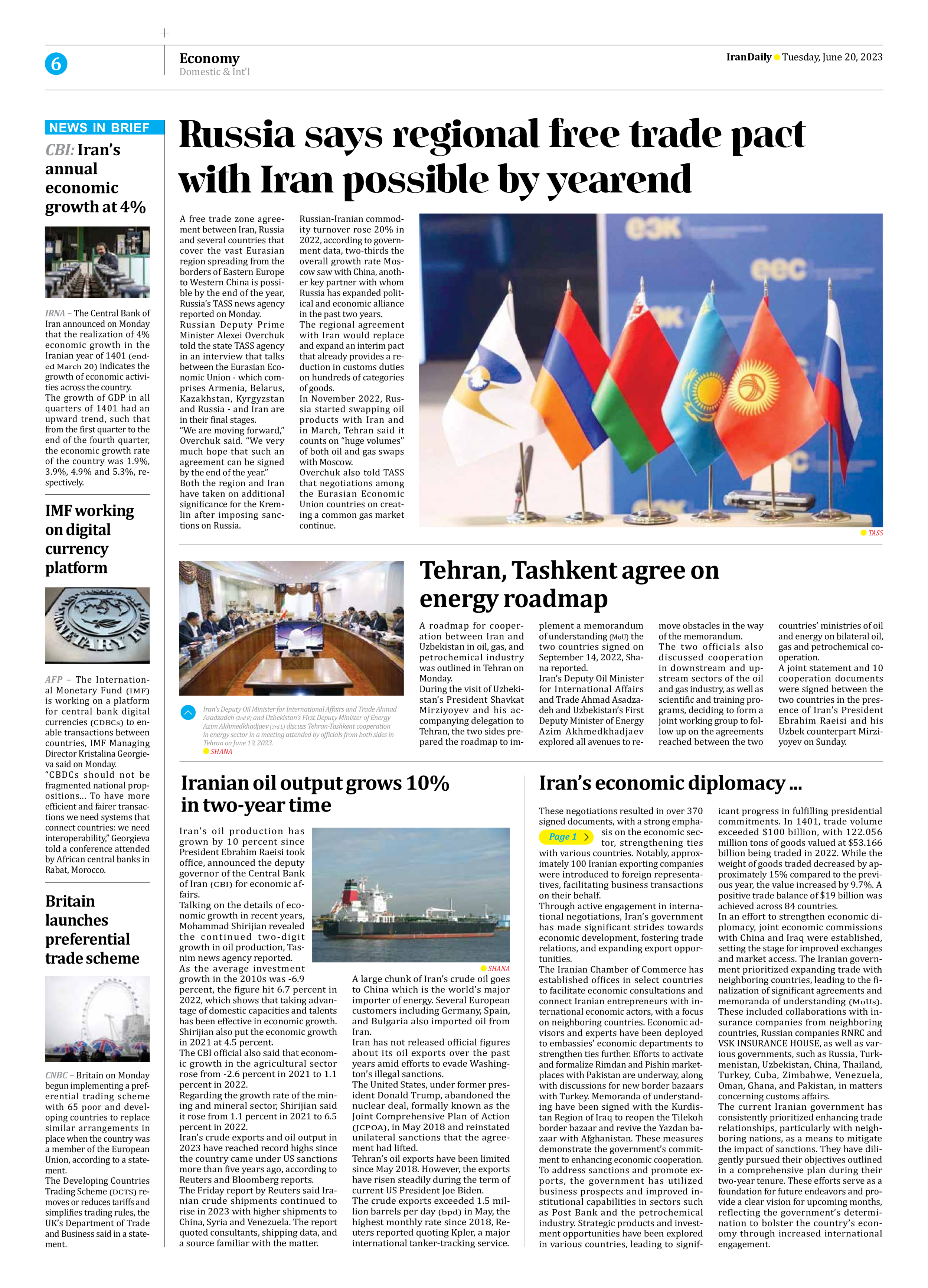
Iranian oil output grows 10% in two-year time
Iran’s oil production has grown by 10 percent since President Ebrahim Raeisi took office, announced the deputy governor of the Central Bank of Iran (CBI) for economic affairs.
Talking on the details of economic growth in recent years, Mohammad Shirijian revealed the continued two-digit growth in oil production, Tasnim news agency reported.
As the average investment growth in the 2010s was -6.9 percent, the figure hit 6.7 percent in 2022, which shows that taking advantage of domestic capacities and talents has been effective in economic growth.
Shirijian also put the economic growth in 2021 at 4.5 percent.
The CBI official also said that economic growth in the agricultural sector rose from -2.6 percent in 2021 to 1.1 percent in 2022.
Regarding the growth rate of the mining and mineral sector, Shirijian said it rose from 1.1 percent in 2021 to 6.5 percent in 2022.
Iran’s crude exports and oil output in 2023 have reached record highs since the country came under US sanctions more than five years ago, according to Reuters and Bloomberg reports.
The Friday report by Reuters said Iranian crude shipments continued to rise in 2023 with higher shipments to China, Syria and Venezuela. The report quoted consultants, shipping data, and a source familiar with the matter.
A large chunk of Iran’s crude oil goes to China which is the world’s major importer of energy. Several European customers including Germany, Spain, and Bulgaria also imported oil from Iran.
Iran has not released official figures about its oil exports over the past years amid efforts to evade Washington’s illegal sanctions.
The United States, under former president Donald Trump, abandoned the nuclear deal, formally known as the Joint Comprehensive Plan of Action (JCPOA), in May 2018 and reinstated unilateral sanctions that the agreement had lifted.
Tehran’s oil exports have been limited since May 2018. However, the exports have risen steadily during the term of current US President Joe Biden.
The crude exports exceeded 1.5 million barrels per day (bpd) in May, the highest monthly rate since 2018, Reuters reported quoting Kpler, a major international tanker-tracking service.







